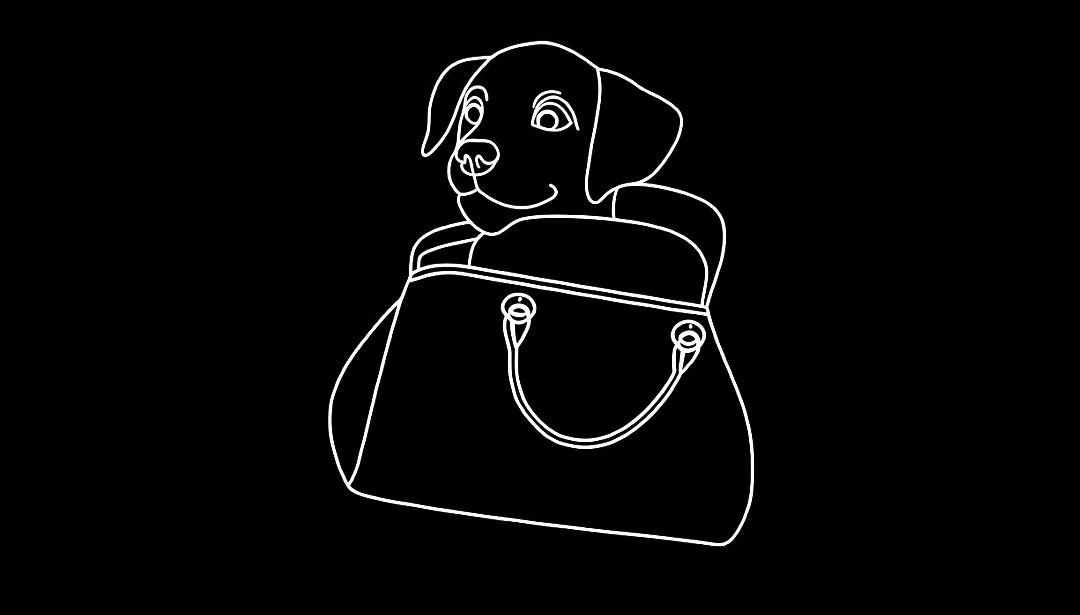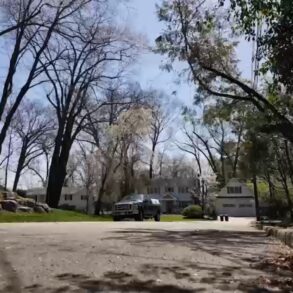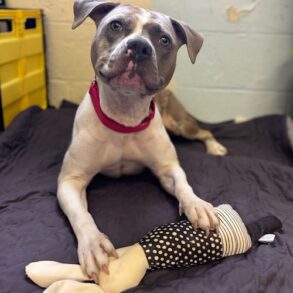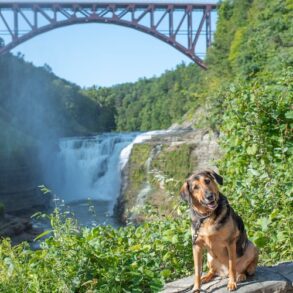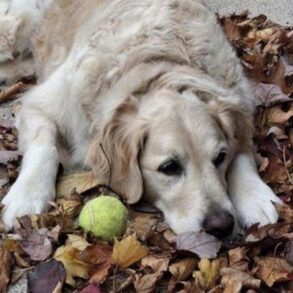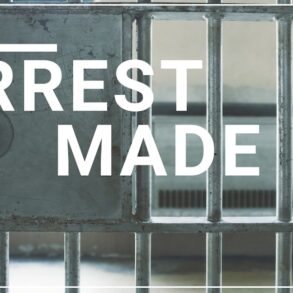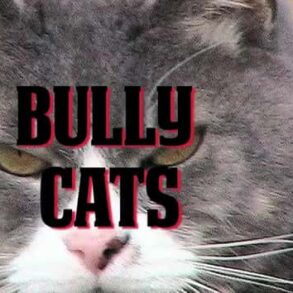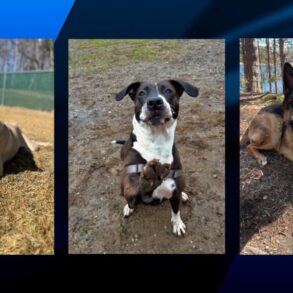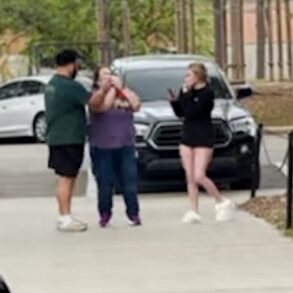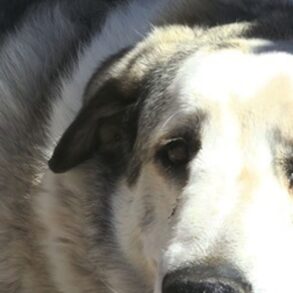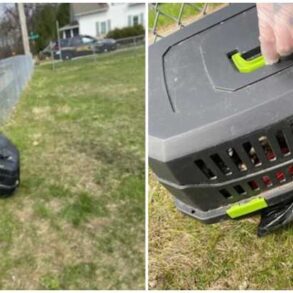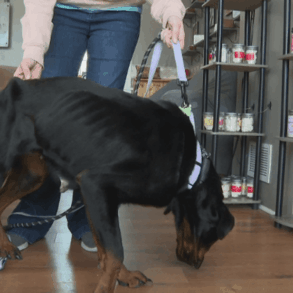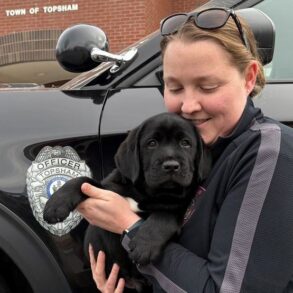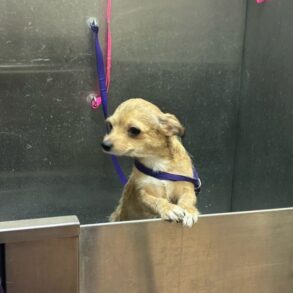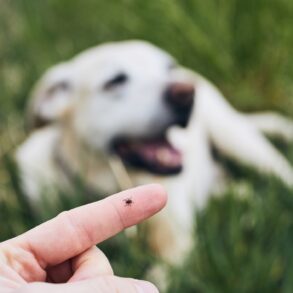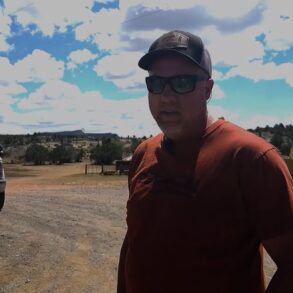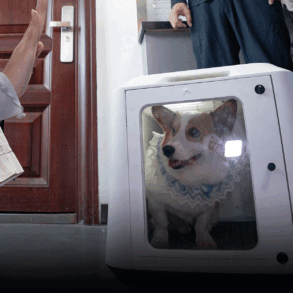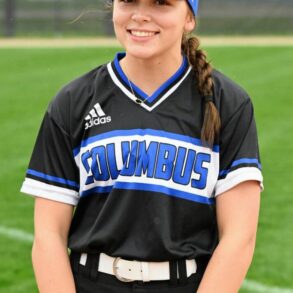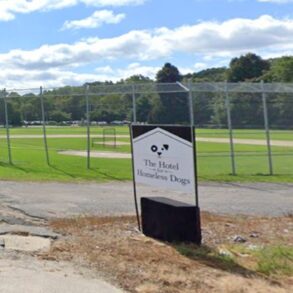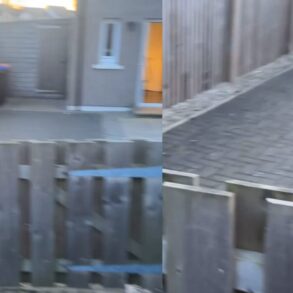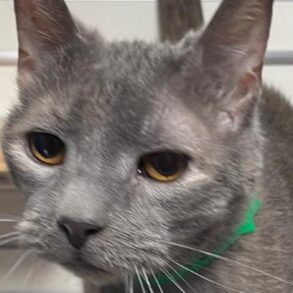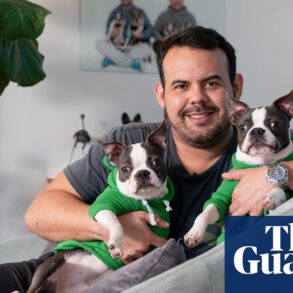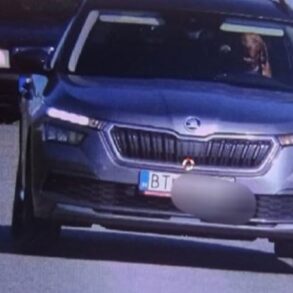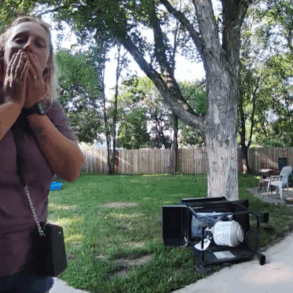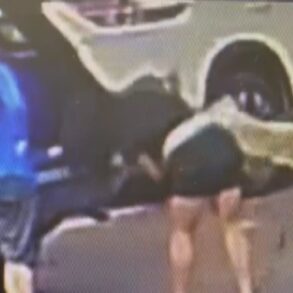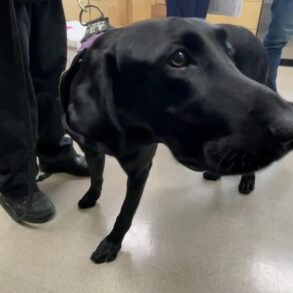For thousands of years, farmers across the world have relied on dogs to protect their livestock from predators.
Livestock guardian dogs, or LGDs, are hardwired for their jobs, but adding them to your operation isn’t like bringing home a pet.
“They are a completely different animal than a house dog,” said Heather Duncan, dairy goat farmer and owner of the Feathered Nest Farm in Moneta, Virginia.
Duncan has two Anatolian shepherds — a female, Xena, and a male, Duke — to protect her miniature Nubian goats. Before bringing them home, she wanted to learn as much as she could to set them up for success, but Duncan found a lot of poor advice online, especially in Facebook groups.
She said the main issue was that people were blaming the dogs when things didn’t go smoothly.
“To me, it’s my responsibility to set both dogs up to succeed,” she said. “And if they don’t, that’s my fault, not theirs.”

Heather Duncan and her female Anatolian shepherd, Xena.
Specialized Training
Duncan relied heavily on mentorship from the breeder who raised Xena, and she recommended others look for reputable breeders who are willing to teach new owners the ropes.
But not all LGD breeders understand how their dogs operate, said Cindy Benson, a professional livestock guardian dog trainer in Oregon.
Benson brought home her first Maremma sheepdogs in 2014 to protect her miniature donkeys from mountain lions. She later started a Maremma breeding program, and over the years she completed several courses in animal behavioral science, eventually closing her breeding business to focus on training.
“I didn’t start out wanting to be an instructor or a trainer or any of that. I just wanted to understand my own dogs,” she said. “What I quickly became aware of was how little accurate info is out there, even for someone that wants to work as hard at it as I was.”
Benson is trying to fill that void with the resources on her website.
She created a free online course, “What is a Livestock Guardian Dog?” available at lgdfreecourse.com, which covers how LGDs are different than prey-driven dogs and what prospective owners need to know.
She also offers a $200 paid course with interactive Zoom sessions, lifetime access to a library of past sessions indexed by topic, and ongoing support.
Benson and Duncan shared some tips for success and pitfalls to avoid.

Cindy Benson with a miniature donkey and one of her Maremmas.
Create the Right Environment
Popular livestock guardian breeds include Great Pyrenees, Anatolian shepherd, Kuvasz and Maremma. No matter what breed you have, Benson said the fundamental principles are the same.
First, start with two dogs.
Livestock guardian dogs work in partnership and need the social stimuli of other dogs to mitigate their prey-driven behavior, Benson said. Bringing home a single dog and putting it in with livestock can set up the dog to chase and harass the animals.
Working alone also creates stress for the dog, which can lead to unwanted behaviors such as excessive barking, climbing fences or digging under fences, Benson said.
To be successful, it’s imperative that livestock are on the farm when the dogs arrive so they can bond to the animals from the beginning.
Build fencing before the LGDs arrive to establish the perimeter. You can’t put dogs on pause and leave them in a pen while you get your property ready and then expect the dogs to be successful as guardians, Benson said.
She also advises against aversive training. Shock collars, electric fences and other fear- and anxiety-based methods work against the dog’s nature and create stress, she said.
Instead, learn to interpret the dog’s behavior to understand what it needs.
“Dogs are never wrong,” Benson said. “Dogs respond as a product of their environment and their genetic base.”
To change behavior, change the environment to add more of what the dog needs and less of what the dog doesn’t need, she said.

A Maremma puppy with a sheep.
Test for Breed Purity
Just because a dog looks like a Great Pyrenees or Anatolian shepherd doesn’t mean it has pure genetics.
Even some breeders don’t realize their dogs have mixed ancestry, Benson said.
She said she’s worked with dogs in the past that were struggling with chasing behavior, barking and other issues. DNA testing showed they inherited those traits from other breeds, despite appearing to be purebred.
The best way to ensure you’re getting a purebred guardian dog is a DNA test, Benson said.
Use a cotton swab to get a saliva sample from your prospective dog and send it to a consumer-facing canine genetic testing service such as Embark or Orivet.
“If you know what you’re dealing with, you can adjust your expectations, adjust your training goals,” she said. “If you don’t know and you expect things from the dog that it is not genetically programmed to give you, it’s just a wreck.”
It’s also important to test for potential health issues common to guardian breeds.
Duncan said it was important to her to find a breeder who performed health testing and had registration records to track the dogs’ genetics.
“You don’t want a livestock dog that at 2 years old is starting to have some hip dysplasia issues,” she said. “They’re basically at their peak but may not be able to work 100% because of that dysplasia.”
Reproductive health is another issue.
It’s a common message to pet owners to spay and neuter their companion animals, and this practice is just as important for working dogs, Benson said.
The best combinations for livestock guardians are usually male-female pairings, she said, but it’s imperative that owners have their dogs spayed and neutered early so they don’t end up with a litter of unplanned puppies.

A dam and her kids at The Feathered Nest Farm in Moneta, Va. Farmer Heather Duncan has two Anatolian shepherds to guard the miniature Nubian goats.
Don’t Give Up
Farmers who are having difficulties with their livestock guardian dogs may be afraid there’s nothing they can do, and new or beginning farmers might feel overwhelmed by the learning curve or the training.
But Benson wants to encourage people that it’s not impossible, and they can have success bringing LGDs into their operation as long as they have the right mindset and are open to learning.
“I’ve never raised a dog that wasn’t successful living with livestock,” she said. “It doesn’t make me brilliant. It just makes me someone who pays attention to how dogs see their world, rather than how people would like them to see their world.”
For more information and training resources, visit bensonmaremmas.com.

Cindy Benson with two of her Maremmas.
This post was originally published on this site be sure to check out more of their content.
